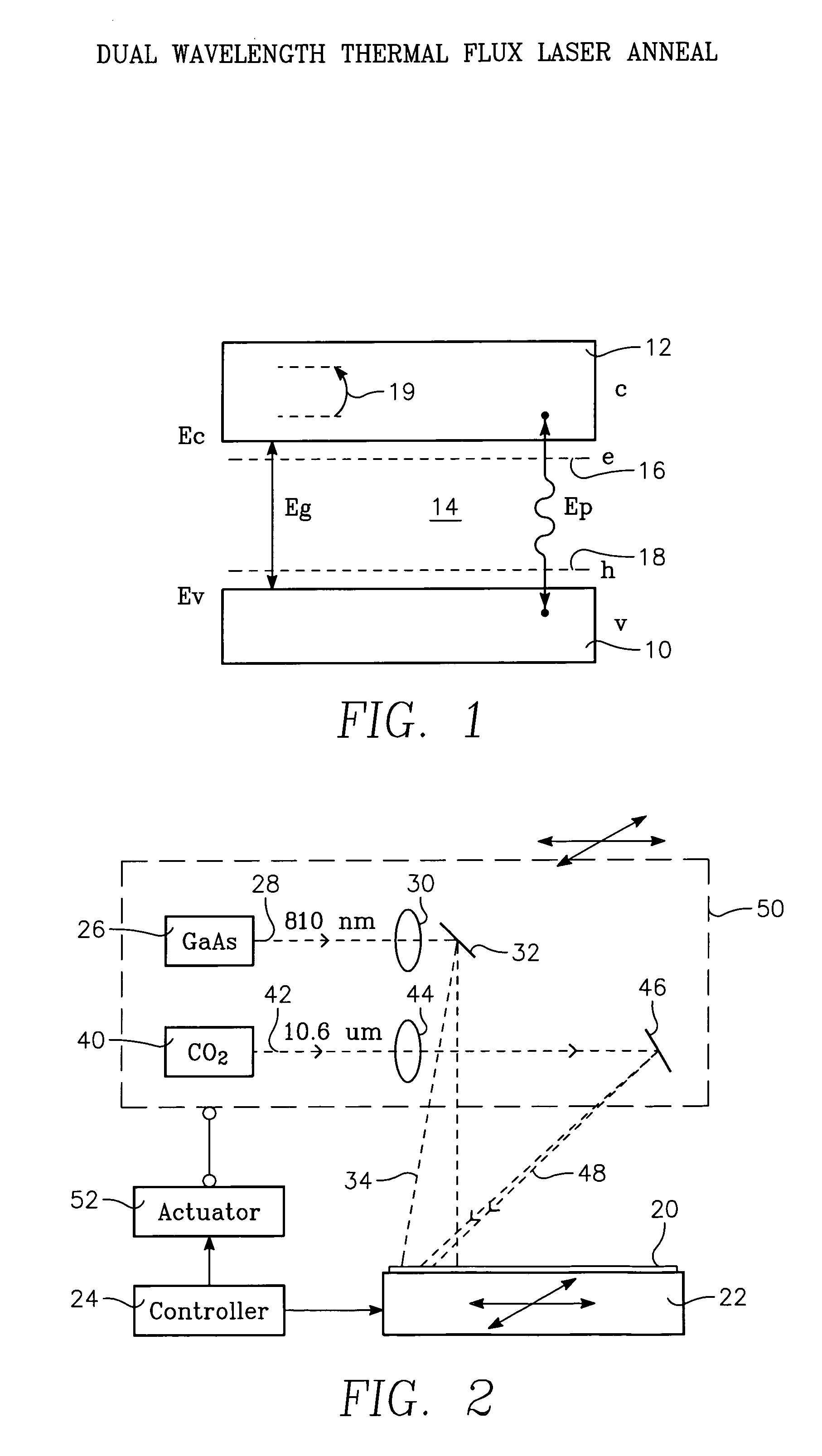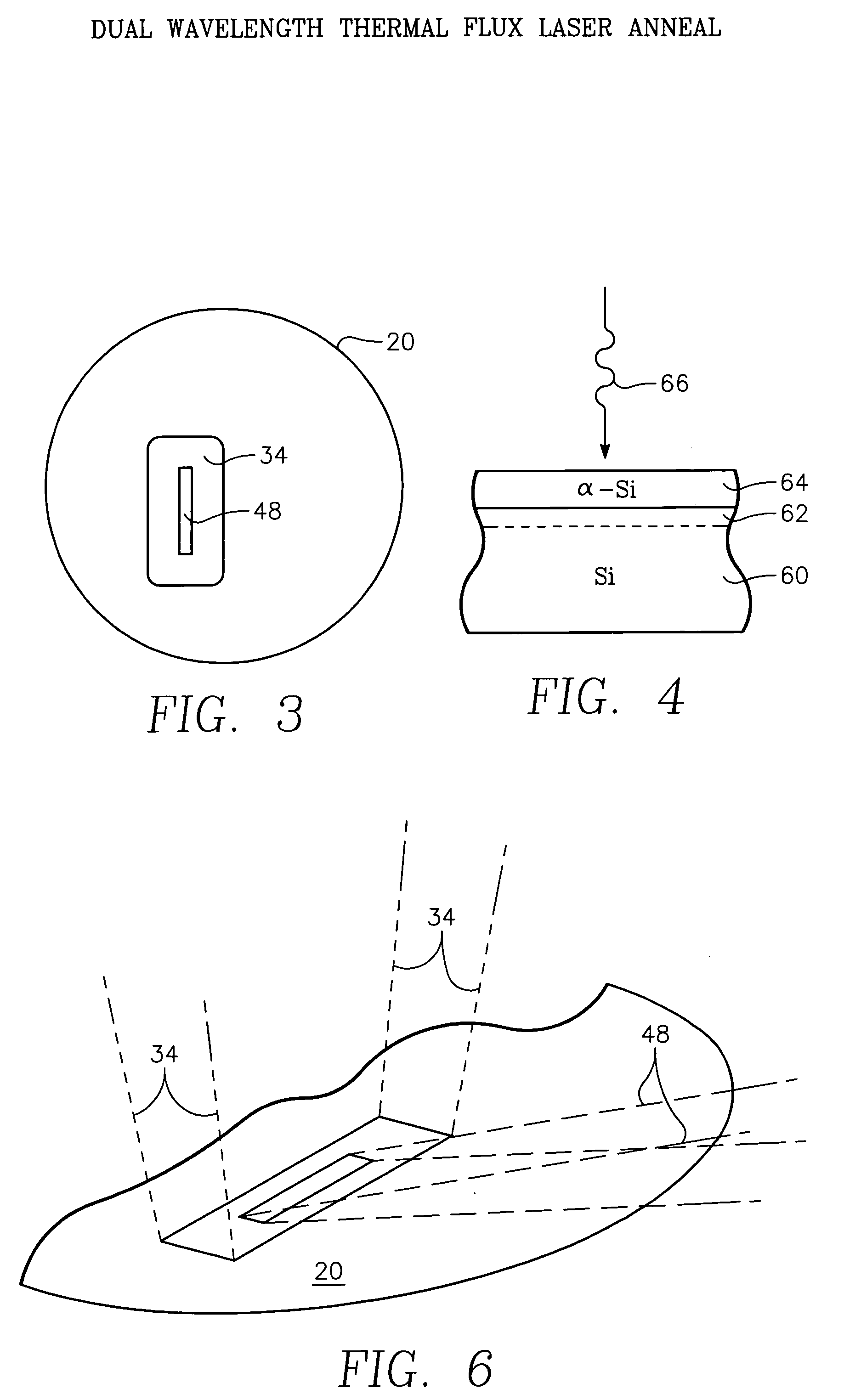Dual wavelength thermal flux laser anneal
a laser annealing and thermal flux technology, applied in the direction of laser beam welding apparatus, welding apparatus, manufacturing tools, etc., can solve the problems of increasing the thermal budget required for thermal processing, drastically reducing the thermal budget, and even spike annealing becoming insufficient for advanced processing
- Summary
- Abstract
- Description
- Claims
- Application Information
AI Technical Summary
Benefits of technology
Problems solved by technology
Method used
Image
Examples
Embodiment Construction
[0029] A simplified representation of one embodiment of the invention is schematically illustrated in the elevational view of FIG. 2. A wafer 20 or other substrate is held on a stage 22 that is motor driven in one or two directions under the control of a system controller 24. A short-wavelength laser 26, such as a GaAs laser bar, emits a visible or nearly visible continuous wave (CW) beam 28 at a wavelength which is shorter than the silicon bandgap wavelength of about 1.11 μm. For the GaAs laser 26, the emission wavelength is typically about 810 nm, which can be characterized as red. First optics 30 focus and shape the beam 28 and a reflector 32 redirects the beam 28 towards the wafer 20 in a relatively wide activating beam 34, also illustrated in the plane view of FIG. 3. The activating beam 34 may be inclined at some angle, for example, of 15° with respect to the wafer normal to prevent reflection back to the GaAs laser 26, which may shorten the lifetime of diode lasers. A long-wa...
PUM
| Property | Measurement | Unit |
|---|---|---|
| wavelength | aaaaa | aaaaa |
| wavelength | aaaaa | aaaaa |
| temperature | aaaaa | aaaaa |
Abstract
Description
Claims
Application Information
 Login to View More
Login to View More - R&D
- Intellectual Property
- Life Sciences
- Materials
- Tech Scout
- Unparalleled Data Quality
- Higher Quality Content
- 60% Fewer Hallucinations
Browse by: Latest US Patents, China's latest patents, Technical Efficacy Thesaurus, Application Domain, Technology Topic, Popular Technical Reports.
© 2025 PatSnap. All rights reserved.Legal|Privacy policy|Modern Slavery Act Transparency Statement|Sitemap|About US| Contact US: help@patsnap.com



